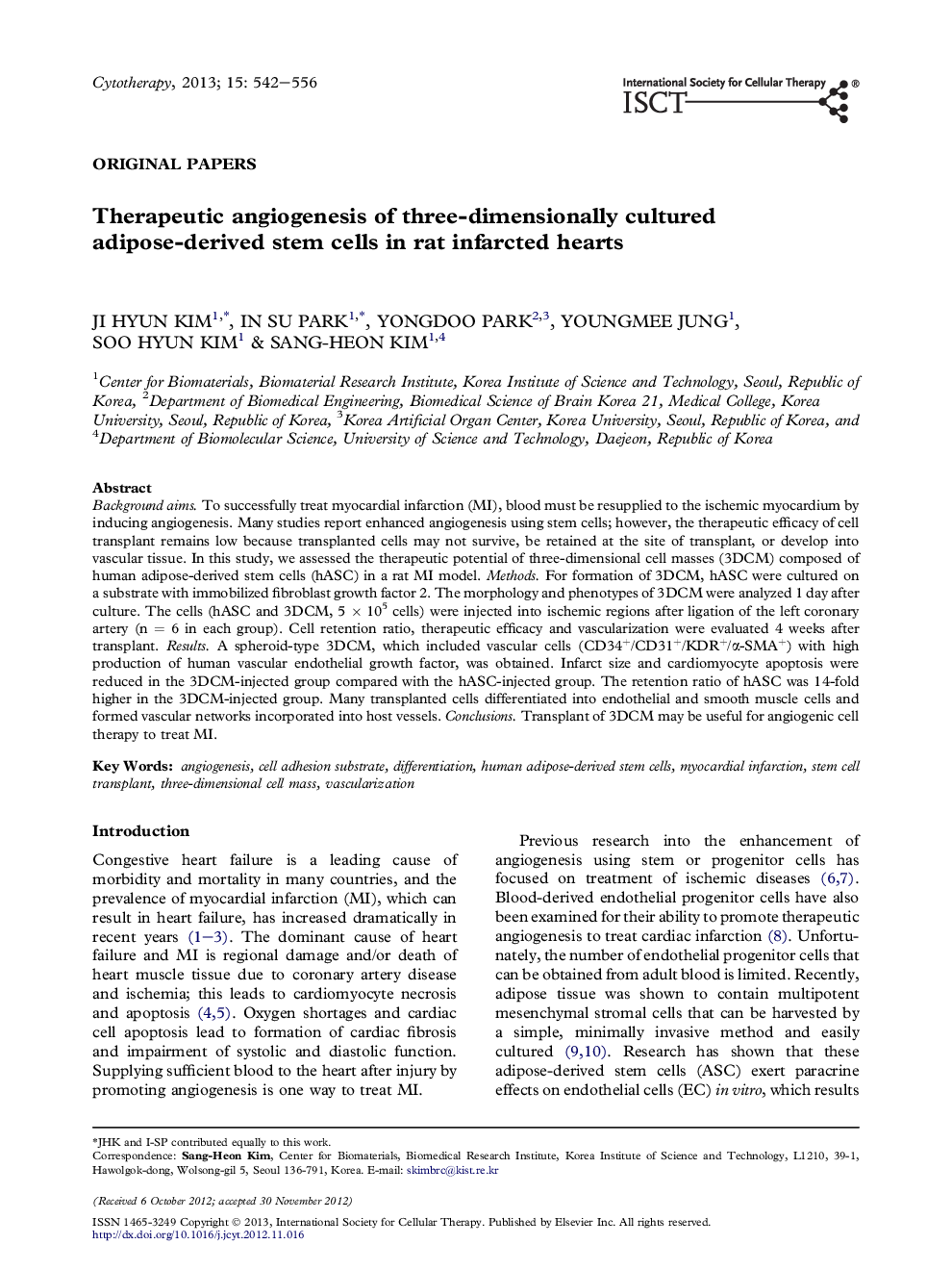| Article ID | Journal | Published Year | Pages | File Type |
|---|---|---|---|---|
| 2172602 | Cytotherapy | 2013 | 15 Pages |
Background aimsTo successfully treat myocardial infarction (MI), blood must be resupplied to the ischemic myocardium by inducing angiogenesis. Many studies report enhanced angiogenesis using stem cells; however, the therapeutic efficacy of cell transplant remains low because transplanted cells may not survive, be retained at the site of transplant, or develop into vascular tissue. In this study, we assessed the therapeutic potential of three-dimensional cell masses (3DCM) composed of human adipose-derived stem cells (hASC) in a rat MI model.MethodsFor formation of 3DCM, hASC were cultured on a substrate with immobilized fibroblast growth factor 2. The morphology and phenotypes of 3DCM were analyzed 1 day after culture. The cells (hASC and 3DCM, 5 × 105 cells) were injected into ischemic regions after ligation of the left coronary artery (n = 6 in each group). Cell retention ratio, therapeutic efficacy and vascularization were evaluated 4 weeks after transplant.ResultsA spheroid-type 3DCM, which included vascular cells (CD34+/CD31+/KDR+/α-SMA+) with high production of human vascular endothelial growth factor, was obtained. Infarct size and cardiomyocyte apoptosis were reduced in the 3DCM-injected group compared with the hASC-injected group. The retention ratio of hASC was 14-fold higher in the 3DCM-injected group. Many transplanted cells differentiated into endothelial and smooth muscle cells and formed vascular networks incorporated into host vessels.ConclusionsTransplant of 3DCM may be useful for angiogenic cell therapy to treat MI.
